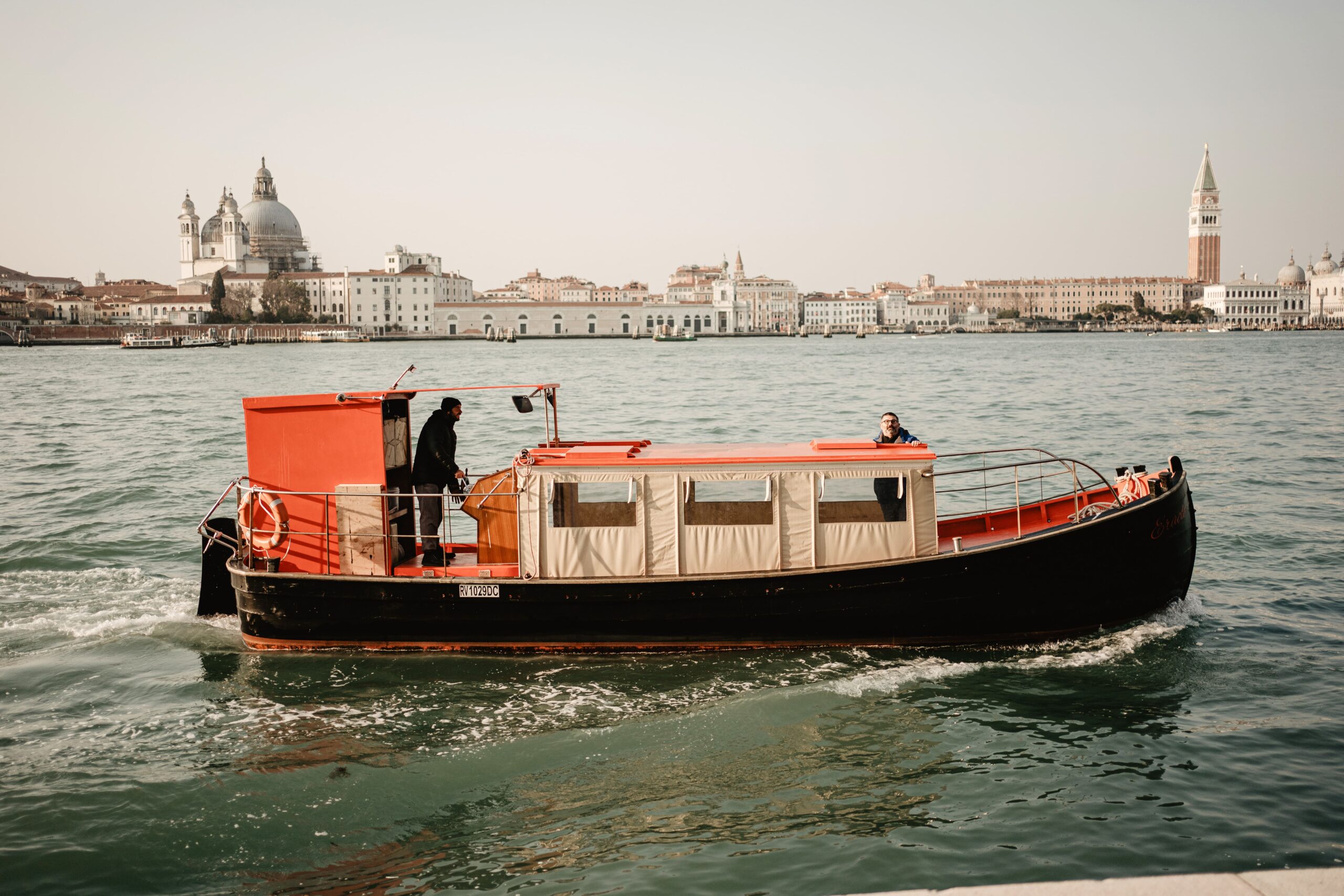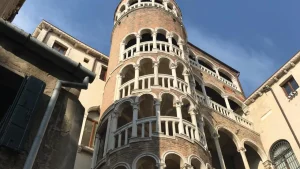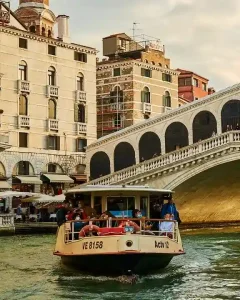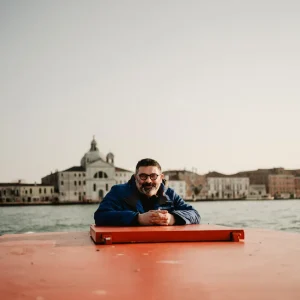Meet the Masters: Discover Venice’s Artisans Keeping Centuries of Craft Alive
🛠️ Meet the Masters: Discover Venice’s Artisans Keeping Centuries of Craft Alive
Venice isn’t a museum trapped in time — it’s a living masterpiece where centuries-old traditions still thrive in the hands of extraordinary artisans. Beyond the crowds and souvenir shops lies another world — one of glowing furnaces, scent of paint, soft wood shavings, and stories passed down through generations. These are the workshops where Venice’s soul still beats strong.
At Tour Leader Venice, we’ve spent years building relationships with these master craftspeople — people whose names may never appear in guidebooks but whose artistry defines the city’s identity. Our exclusive behind-the-scenes experiences open the doors of these private workshops, giving travelers the chance to witness, learn, and connect with the living heritage of Venice.
🔥 The Glassblowers of Murano: Fire, Breath & Ancient Secrets
Just a short boat ride from Venice’s main squares, the island of Murano has been home to glassmaking excellence for more than seven centuries. In 1291, the Venetian Republic moved all furnaces to this island — partly to prevent fires, but also to guard its lucrative trade secrets. To this day, those secrets still burn within the furnaces of Murano’s masters.
Inside the Furnace
When you step into one of our Murano Glassblowing Workshops, the air shimmers with heat from furnaces roaring at over 2,000°F. Here, master glassmakers — or maestri — transform molten glass into shimmering chandeliers, elegant vases, and delicate sculptures using methods refined over generations.
Forget crowded demonstrations. Our visits are intimate, interactive, and personal. Guests chat directly with artisans, learn the language of tools and color, and often get to try their hand at simple glass shaping. Some maestri trace their family lineage back to the very origins of Venetian glassmaking — a living thread connecting past and present.
Watching a maestro gather molten glass onto his blowpipe and breathe life into a form is hypnotic. Each rotation, each pause, is instinct — the rhythm of centuries. No two pieces are ever the same, and the smallest imperfection becomes a signature of authenticity.
To experience it yourself, join our Glass Bead Workshop or Lagoon Discovery Tour — both include exclusive Murano access and private demonstrations.
🎭 The Mask Makers: Guardians of Carnival Tradition
Venetian masks are among the city’s most iconic symbols — but few visitors realize how much artistry hides behind them. In quiet backstreets and tucked-away ateliers, traditional mask makers still handcraft the faces that bring Carnival to life, using Renaissance techniques that survived centuries of political and artistic change.
Behind the Mask
In these workshops, artisans start with clay molds — some dating back hundreds of years. They layer papier-mâché, press, dry, and shape. Each mask is then painted and gilded by hand, sometimes with gold leaf, sometimes with antique pigments that give each piece its own soul.
Our Venetian Mask Workshop goes far beyond watching. You’ll decorate your own mask alongside these masters — learning the difference between a noble Bauta, a mischievous Arlecchino, and the mysterious Medico della Peste. Each design tells a story: of power, love, secrecy, and Venice’s age-old carnival spirit.
There’s something profoundly moving about creating your own mask here. As paint dries under your fingers, you become part of a story stretching back to the days of Casanova.
Pair this experience with our Exclusive Wedding Gondola or Romantic Venice Photoshoot for a touch of Carnival glamour in your own Venetian adventure.
⛵ The Gondola Builders: Keeping Venice Afloat
Few crafts are more intimately tied to Venice’s identity than gondola building. In the city’s last surviving squeri (boatyards), artisans known as maestri d’ascia — literally, “masters of the axe” — still handcraft each gondola from scratch, honoring a tradition unchanged for eight centuries.
Eight Centuries of Perfection
Each gondola takes months to complete and requires eleven different types of wood — oak for strength, elm for flexibility, cherry for beauty. Its design is asymmetrical, carefully weighted to compensate for the gondolier’s stance, allowing the boat to glide perfectly straight through the canals.
During our Off-the-Beaten-Path Orientation Tour, guests visit one of these few remaining workshops. The atmosphere feels sacred — the scent of resin and sawdust mixing with lagoon air, the echo of wooden mallets striking in rhythm. You’ll meet the craftsmen themselves, who explain how each curve, plank, and metal detail contributes to Venice’s most famous vessel.
It’s not a museum visit — it’s a conversation with history. Every gondola here tells a story, and every craftsman carries a piece of the city’s DNA in his hands.
To feel this connection from the water, join our Private Gondola Ride or learn to row like a Venetian in our Venetian Rowing Experience.
🧵 The Lace Makers of Burano: Threads of Air and Light
On the rainbow-colored island of Burano, time slows to the rhythm of a needle and thread. Inside modest workshops and home studios, elderly women continue the intricate art of lace-making — an endangered craft once coveted by queens and emperors.
Stitches in the Air
Known as Punto in Aria — “stitches in the air” — Burano lace is made entirely by hand, with no fabric backing. Each design forms directly from the imagination of the maker. A single piece can take months of work and hundreds of thousands of stitches.
During our Island Hopping Excursion, guests visit Burano to meet these extraordinary women, some of whom have been stitching since childhood. Their fingers move quickly, instinctively — the result of decades of practice.
Many describe their work as meditative, a dialogue between patience and precision. For visitors, it’s a humbling glimpse into the quiet side of Venetian craftsmanship — one thread at a time.
📚 The Bookbinders & Paper Artists: Preserving Beauty on Every Page
Venice has been a city of words and ideas for centuries. In tiny studios scattered around Dorsoduro and San Polo, master bookbinders and paper makers keep this literary legacy alive. Using marbled papers, hand-tooled leather, and gilded lettering, they craft notebooks, journals, and decorative prints that feel timeless.
Ancient Techniques, Modern Hands
Marbled paper — that mesmerizing dance of swirling color — is still made here exactly as it was in the Renaissance. Pigments are floated on a bath, combed into intricate designs, and carefully transferred onto paper. Each sheet is unique — an unrepeatable combination of chance and control.
Visitors can experience this firsthand during our Marbled Paper Workshop or explore Venice’s typographic past through our Venetian Letterpress Printing Experience. You’ll fold, print, and bind your own creations — and take home something more meaningful than any store-bought souvenir.
Each finished page carries the essence of Venice: artistry, imperfection, and the gentle passage of time.
🎨 Experience Authentic Venice Through Its Artisans
What makes our artisan experiences truly unique isn’t just the access — it’s the relationships. After years of collaboration, we’re welcomed not as tourists but as trusted friends. That’s what allows us to offer visitors a genuine connection, where art meets humanity.
Each visit is customized: choose a single workshop or combine several crafts over multiple days. Imagine starting your morning among the furnaces of Murano, crafting your own mask after lunch, and ending the day on a gondola built by hand — all while hearing stories from the very people who keep these traditions alive.
Combine your artisan journey with a Cicchetti & Wine Tour or a Slow Lagoon Sunset Tour for a full immersion into Venetian life — crafts, flavors, and timeless views.
🖐️ Explore All Venice Hands-On Workshops
🗓️ Planning Your Artisan Adventure
Our artisan tours run year-round, each season revealing a new side of Venice’s creative spirit. Winter offers quieter, more intimate sessions with extra time for conversation and learning. In summer, workshops can be combined with lagoon boat trips to Murano, Burano, and Torcello.
Whether you’re looking for a short introduction or a deep, multi-day immersion, every experience supports local artisans directly. You’re not just buying art — you’re sustaining the heritage of a city built on creativity.
Many guests choose to continue their journey with a visit to Venice’s great art institutions. Combine your workshop with Peggy Guggenheim Collection or Accademia Gallery using skip-the-line tickets for a seamless art-filled day.
🎭 Start Your Artisan Journey in Venice
❤️ Why It Matters: Keeping Venice Alive, One Craft at a Time
Every time someone steps into a workshop, listens to an artisan’s story, or creates something with their own hands, a centuries-old flame burns brighter. These experiences are more than activities — they’re acts of preservation.
Venice has always been about transformation — sand into glass, paper into art, wood into waterborne poetry. Through your visit, you become part of that continuum.
Ready to meet the masters who keep Venice’s heart beating? Let’s open the doors that most visitors never see.
✨ Book Your Exclusive Artisan Experience
FAQs — Venice’s Living Artisans & Workshops
Can visitors actually participate in Venice’s artisan workshops?
Yes — that’s the heart of our approach. Through Tour Leader Venice, guests don’t just watch demonstrations; they create alongside masters in authentic studios. You can blow glass in Murano during our Glass Bead Workshop, paint your own mask in the Venetian Mask Workshop, or craft marbled paper in our Traditional Marbled Paper Workshop — all guided by real Venetian artisans.
Are these artisan tours suitable for families or beginners?
Absolutely. Every hands-on experience is designed for accessibility and enjoyment. Children love decorating masks or learning to row in the Venetian Rowing Experience, while adults often choose to combine a workshop with a Cicchetti & Wine Tour for a perfect balance of art and flavor. No previous experience is required — just curiosity.
Which Venetian crafts are the most unique to experience in person?
Murano glass and Burano lace are the most famous, but Venice’s true treasures extend to bookbinding, mask-making, and gondola craftsmanship. For a deeper dive, combine our Murano Glassblowing Workshop with the Venetian Letterpress Printing Experience — two unforgettable ways to witness living history and bring home a piece of Venice you’ve made yourself.







